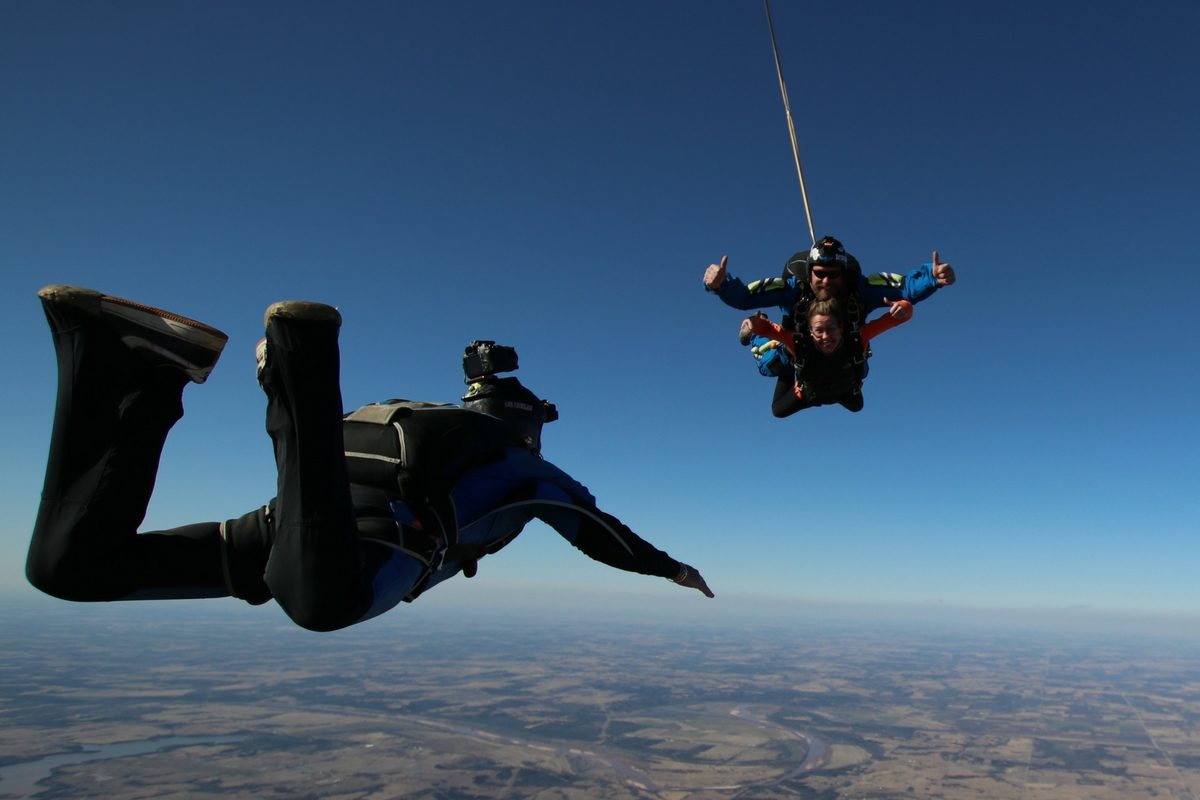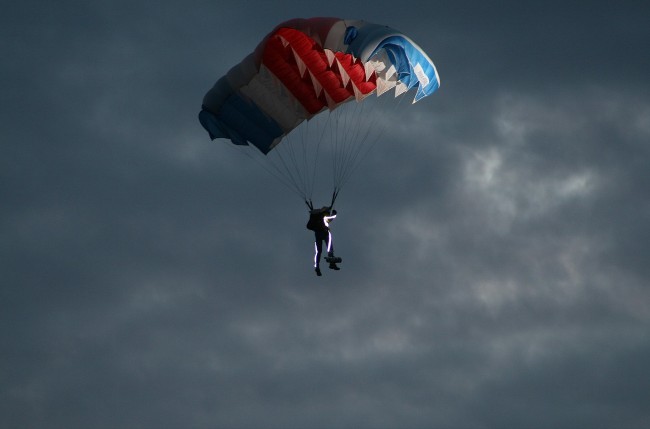Can You Skydive at Night?
Wednesday, January 31, 2024
In the heart-pounding world of skydiving, the excitement of jumping into the unknown draws certain adventure enthusiasts. After a skydive, the line of the unobtainable becomes blurred and the possibilities might even seem limitless. New experiences inspire a number of new questions to come to mind, including “Can you skydive at night?” In this article, we’ll unravel the mysteries surrounding night skydiving and shed a little light on the possibilities of soaring among the stars.
The Allure of Night Skydiving

Why would you want to skydive at night? Night skydiving possesses an irresistible charm and excitement that sparks the curiosity of many skydivers and thrill-seekers alike. Imagine the exhilarating feeling of freefalling through the darkness, the realm of the unknown, surrounded by starlight. Night jumps can add a new experience, an extra challenge, and are educational and fun! However, this means that they require greater care on all fronts.
Can You Skydive at Night?
So, can you go skydiving at night? The answer is a resounding Yes! You can indeed skydive at night! Unfortunately, tandem skydivers are not permitted to perform night jumps – for safety reasons, of course!
Night time skydiving elevates risk due to a variety of factors including a more limited field of vision. We are in the business of mitigating risk, which is why tandem skydives at night are not currently offered in the United States. Only experienced skydivers with specific certifications are permitted to perform night jumps with the right amount of equipment and preparation.
What is Considered a Night Jump?
According to the United States Parachute Association (USPA) and the Federal Aviation Administration (FAA), any jumps between official sunset and official sunrise are considered night jumps. Additionally, for those looking to meet license requirements or establish official world records, night jumps must take place between one hour after official sunset and one hour before official sunrise.
Night Skydiving Requirements
If you intend on participating in night skydiving, you will be required to present valid paperwork to prove that you are a USPA-certified B licensed skydiver or higher. B licensed skydivers must have:
- Completed at least 50 jumps
- Accumulated at least 30 minutes of freefall time
- Landed within 33 feet of target center on 10 jumps
- Completed a planned formation on 10 formation skydives (or 10 formation freefly skydives) with five jumps involving at least three participants
- Documented live water training with full equipment
- Completed all requirements listed on the USPA Canopy Piloting Proficiency Card
- Passed the written USPA B license exam conducted by a current USPA I, Examiner, Safety & Training Advisor (S&TA), Judge, or USPA Board member
Participants are also required to complete a comprehensive briefing by a USPA S&TA, Examiner, or Instructor who has completed two night jumps, immediately prior to the intended night jump.
Safety Measures for Night Time Skydiving
There are many challenges associated with night jumps, mostly including limited visibility, disorientation, lack of familiar reference points and sensory adaptations. Even the moon’s shadow cast can cause confusion with jumpers.
The good thing is that, as with all unique disciplines of skydiving, night jumping can be made safer through proper training, special equipment, pre-planning, and good judgment. Every participating skydiver, should review:
- Techniques of avoiding disorientation
- Use of identification light, lighted instruments, and flashlight
- Target lighting
- Ground-to-air communications
- Reserve activation
When Should Night Jumps be Conducted?
You can’t skydive on any old night – the conditions must be favorable.
- Full Moon
Night jumps are usually scheduled on nights when the moon is the brightest, preferably a full moon, so you are able to see your parachute better in order to determine steerability, and to have a better chance of seeing the landing area.
- Light Winds
To prevent jumpers from landing off the dropzone.
- Clear Night
Night jumps should only be made on clear nights with minimum cloud cover to increase the moonlight’s glow and help with visibility.
What Equipment is Required for Night Jumps?
Some of the gear required for night time skydiving may already be part of your kit. Other equipment may need to be borrowed or bought. Unsurprisingly, most of what’s essential involves light!
- Bright Light
A light visible for at least three statute miles. Glow suits or chemlights work fine. Night skydiving with flares adds an extra excitement but should be used with caution.
- Visible Altimeter
Glow face (or lighted) altimeter.
- Flashlight
To check the canopy on opening.
- Whistle
With limited visibility, whistles are used to warn other jumps under canopy or to signal other jumpers after landing.
- Lit Landing Area
There must be sufficient lighting to illuminate the target. Lighting can be provided by flashlights, electric light, or even car headlights. It is important to note that flares, open flames or other pyrotechnics can be extremely dangerous and should not be used to light the target area.
Choosing the Right Destination

Have all the requirements necessary for night jumping? While Oklahoma Skydiving may not currently offer night skydiving, there are destinations known for providing this extraordinary experience. Each location offers its own breathtaking backdrop for a nighttime adventure. Whether it is the glittering city lights below or the serene beauty of a moonlit landscape, choosing the right destination can enhance the overall experience of night skydiving.
Here are a few locations we know of that sometimes feature night jumps for licensed jumpers as part of their events calendar:
Not qualified for night jumps yet? The best way to get started on your night skydiving journey is by making your first skydive – book your tandem skydive with Oklahoma Skydiving today! Blue skies!
Copyright © 2024, Oklahoma Skydiving Center, All Rights Reserved.
DropZone Web Design & Marketing by Beyond Marketing, LLC





